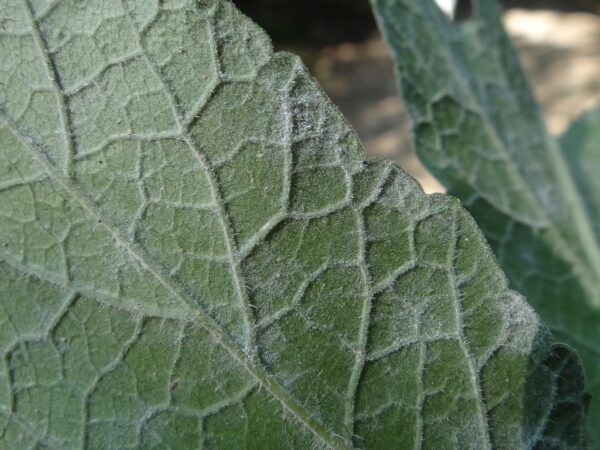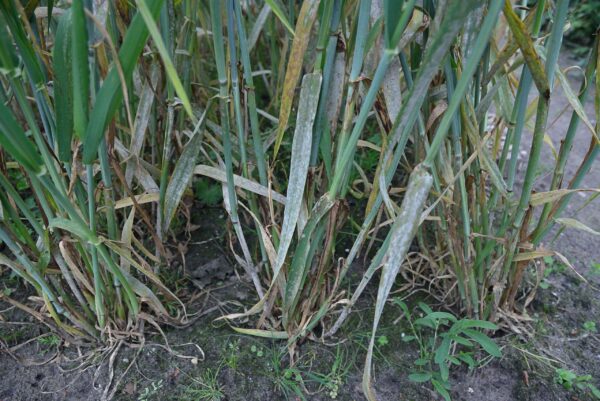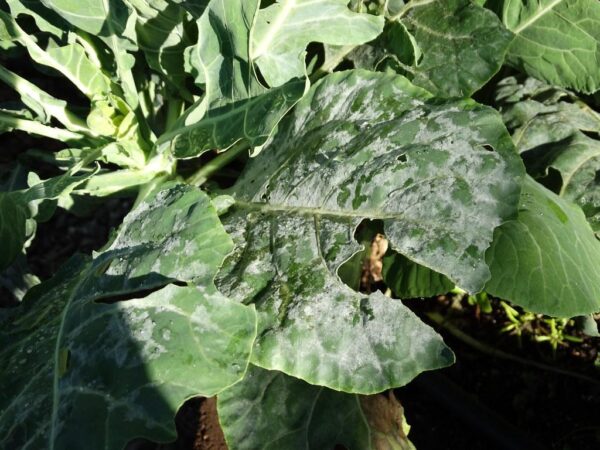
Powdery mildew (Erysiphe spp.)
Caused by various species of the Erysiphe genus, such as Erysiphe graminis, Erysiphe polygoni, Erysiphe cruciferarum, and Erysiphe heraclei, these diseases are characterized by white or grayish powdery spots on the surfaces of leaves, stems, and sometimes fruits.
General Prevention and Management Strategies
Preventive measures and cultural practices play a crucial role in managing powdery mildew across different plants. These strategies include:
- Selecting Resistant Varieties: Choose plant species and cultivars known for their resistance to specific Erysiphe species.
- Optimizing Plant Spacing and Sunlight Exposure: Ensure adequate spacing for good air circulation and position plants in sunny areas to reduce humidity levels around the foliage.
- Managing Watering Practices: Avoid overhead watering to keep foliage dry and utilize drip irrigation systems to minimize leaf wetness.
- Implementing Regular Pruning and Debris Removal: Trim infected plant parts and clean up fallen leaves to reduce the presence of fungal spores.
- Practicing Crop Rotation: Rotate susceptible plants to different areas each season to interrupt the disease cycle.
Biological and Chemical Control
When cultural and preventive measures are insufficient, biological fungicides and selective chemical treatments can be effective:
- Biological Fungicides: Products containing Bacillus subtilis, such as Serenade, utilize beneficial microorganisms to combat fungal pathogens.
- Horticultural Oils: Neem oil and jojoba oil serve as both preventive and curative measures against mild to moderate infections.
- Sulfur-based Fungicides: Wettable sulfur formulations are traditional remedies for preventing powdery mildew, best applied before symptom appearance.
- Synthetic Fungicides: Options include azoxystrobin, propiconazole, and myclobutanil, among others, offering effective control against severe infections.
Identifying Erysiphe Species
Erysiphe graminis
Affects ornamentals, vegetables, and turfgrass, thriving in high humidity and moderate temperatures. Symptoms include powdery growths that may lead to leaf yellowing and distortion.
Erysiphe polygoni
Common on vegetable crops like beans, cucumbers, and tomatoes, it forms white powdery spots, leading to yellowing, distortion, and premature leaf drop.
Erysiphe cruciferarum
Targets cruciferous vegetables and ornamentals, resulting in stunted growth and distorted plant parts. It prefers moderate temperatures and can spread rapidly.
Erysiphe heraclei
Impacts carrots, parsley, and parsnips, with infections manifesting as white fungal patches and potentially causing leaf curling and reddish blotches.




